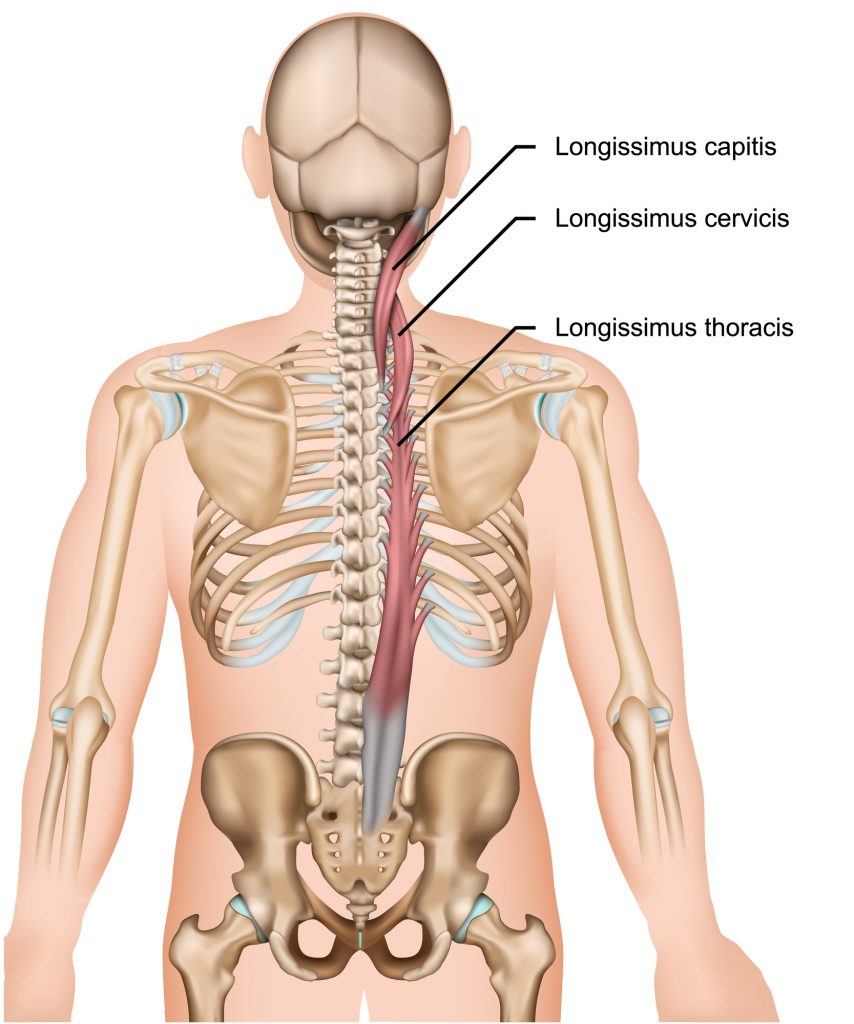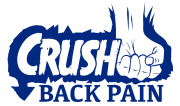The paraspinal muscles are comprised of the psoas, quadratus lumborum, multifidus, and erector spinae.
Psoas
Attaches from vertebral bodies, transverse processes, and the disc to the lesser trochanter of the femur. The psoas muscle as an anterior inclination. It runs over the pubic ramus of the pelvis and uses it as a lever.

The psoas exerts anterior shear and compression on the lumbar spine. It rotates the pelvis anteriorly and exerts innominate anterior torsion.
Quadratus lumborum
Attaches from the twelve rib and the lumbar transverse processes to the iliac crest. The quadratus lumborum is the deepest muscle coming off the iliac crest, underneath the deep erector spinae.
The QL holds the pelvis up and level during walking, running, and moving around on your feet.
Multifidus
The multifidus muscle originates on the sacrum (tail bone) and attaches to the spinous processes and back part of the facet joint capsule. The muscle is encased within the thoracolumbar fascia.

Innervation is from the medial branch of the posterior ramus of the spinal nerve.
Blood supply is from the lumbar and lateral sacral arteries.
Multifidus has a good lever arm for spinal extension due to its origin and insertion points. The muscle is a true lumbar extensor. In addition to extending the lumbar spine the muscle also acts as a stabilizer. As the muscle is encased in the thoracolumbar fascia it is able to increase lower back stiffness and stability by pushing out against the fascia as it contracts. This increases tension through the thoracolumbar fascia, stabilizing the lower back.
Erector Spinae
The erector spinae is located along the right and left sides of the spinal column, and runs the entire length of the spine. The muscle complex functions primarily to extend, side bend, and stabilize the spine.
The muscles can be subdivided into the superficial and deep portions. The attachment points and function differ between the superficial and deep ES (erector spinae).
The superficial ES is the first muscle underneath the thoracolumbar fascia. It connects to the erector spinae aponeurosis and travels superiorly (upward) to attach to the ribs and thoracic spine.
The medial (inside part closest to the spine) part of the ES is called the longissimus thoracis.

The lateral ES is called the iliocostalis lumborum.

The superficial ES extends the lumbar spine and helps stabilize the lower back
The deep ES is located beneath the superficial ES and above the multifidus. It attaches from the PSIS (posterior superior iliac spine) and iliac crest to the lumbar transverse processes.
The deep ES has a small lever arm for extension. When the muscle contracts it squeezes the vertebrae together and dynamically checks anterior shear. Contraction of the deep ES also increases tension through the thoracolumbar fascia, contributing to stability of the lumbar spine.
Paraspinal Muscles and Stability
The paraspinal muscles work together to stabilize and support the lumbar spine during activity. Research has shown that these muscles are smaller and weaker in people with lower back pain. In addition, the muscles have an increase in fat content with longer lasting, chronic lower back pain.
Research shows that training the paraspinal muscles, often referred to as core stability training, reduces lower back pain.
FAQS
The paraspinal muscles are comprised of the psoas, quadratus lumborum, multifidus, and erector spinae. In addition to facilitating movement through the lumbar spine and hips the paraspinals work together to stabilize the lumbopelvic region.
To strengthen the multifidus, and erector spinae spinal extension and isometric holds against resistance are effective. To strengthen the psoas muscle hip flexion works well. The quadratus lumborum can be strengthened with loaded single arm carries and side planks. As the paraspinals function to stabilize the lower back core stability training is effective in strengthening these muscles.
To stretch the psoas kneeling or standing hip flexor stretching is effective.
To stretch the quadratus lumborum side bending away from the side you want to stretch works. So if you are stretching the left quadratus lumborum you would put your left arm up over your head and side bend to your right, reaching with your left hand to your right side.
The multifidus, and erector spinae are lumbar extensors, so lumbar flexion with stretch these muscles. Lumbar extension is bending backward, so bending forward will stretch the spinal extensors.
The paraspinal muscles are comprised of four different muscle groups that attach to the lumbar spine, pelvis, and ribs. These muscles move the lumbar spine, pelvis, and hips. In addition to movement they act to stabilize and support the lumbar spine during activity. The paraspinal muscles are comprised of the psoas, quadratus lumborum, multifidus, and erector spinae.


